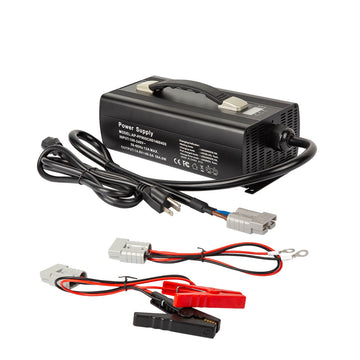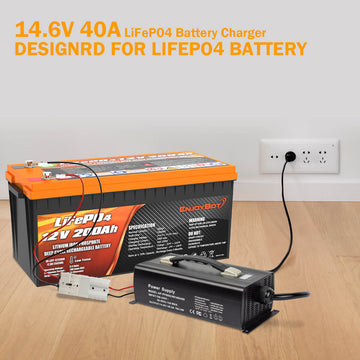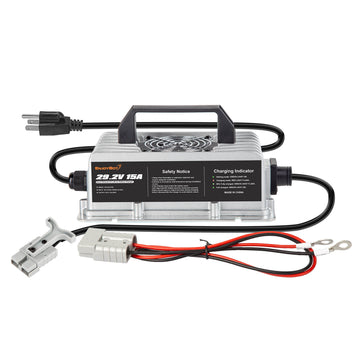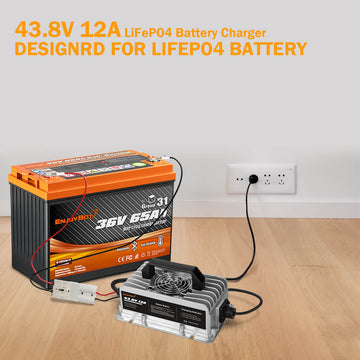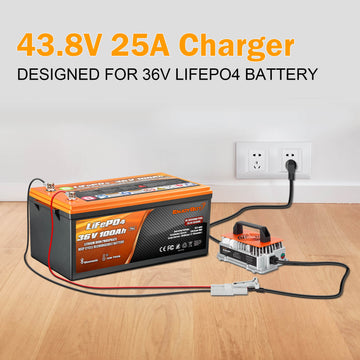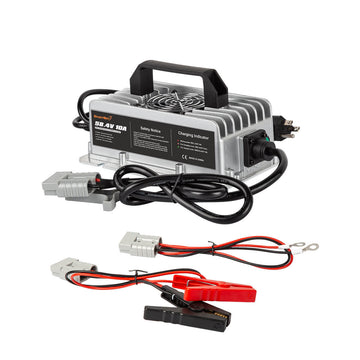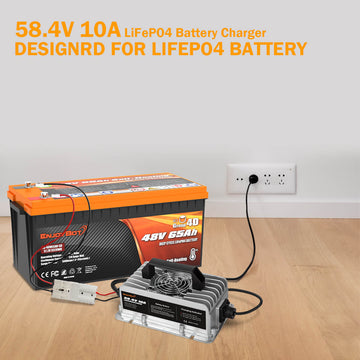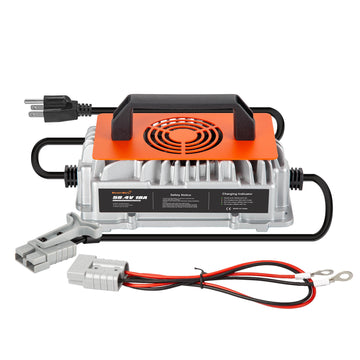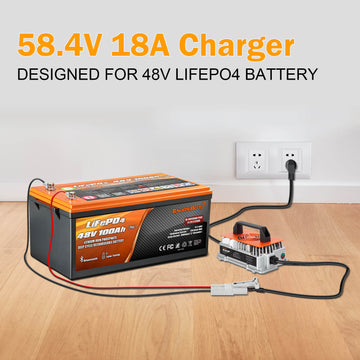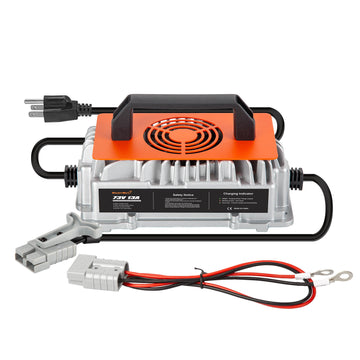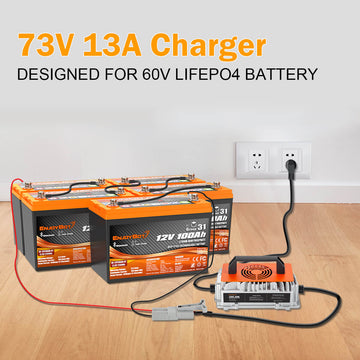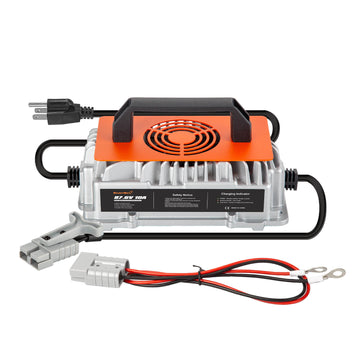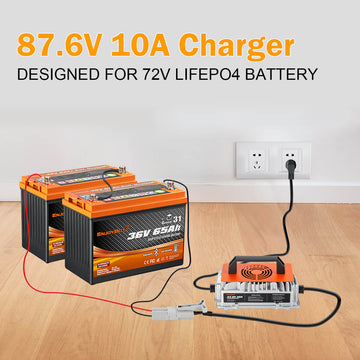Can l Charge a Lithium Battery with a Normal Charger?
Can l Charge a Lithium Battery with a Normal Charger?
One of the biggest advantages of lithium batteries is their ability to charge faster than sealed lead acid batteries. You may have heard time and time again that lithium batteries charge quite quickly, but how quickly exactly, and how much faster are charging capabilities versus SLA counterparts? What does this mean for people as the end users? Ultimately, can you charge lithium batteries with regular sealed lead acid chargers?
Charging Absorption Differences between SLA and Lithium
If you have ever experienced waiting around for a sealed lead acid battery to finish its charging before using it in your device, you know that this is incredibly time-consuming. As the illustration shows below, we charged a 12V 20 amp hour deep cycle SLA battery which took about 6.5 hours to reach 100% SoC (State of Charge). However, the 12.8V 20 amp hour lithium iron phosphate battery reached 100% SOC in just over 2.5 hours.

In a charging cycle for a sealed lead acid battery, there are three stages: constant current, constant voltage, and float charging. The battery is getting its bulk charge during the constant current stage. In the 20Ah deep cycle SLA battery charging example above, the sealed lead acid battery has reached a SOC (State of Charge) of 80% during this phase, which is just over half of the total charging time. The constant voltage charge, ( also known as the absorption charge) charges the remaining twenty percent of the battery, but it also takes around fifty percent of the total charge time. Besides, the battery should be kept on a float charge for most applications to prevent the battery from going into an over-discharged state due to the self-discharging of the chemistry.
However, in the charging cycle of lithium batteries, there are two respective charging stages, constant current and constant voltage. Lithium batteries can absorb 99% of it is capacity (soc of 99%) in 96% of the charge time during the constant current/bulk charging stage. Let's get back to the 12.8V 20AH lithium battery example above, that battery reaches approximately 100% SOC in less than two hours. The constant voltage charge stage, on the other hand, only increases an additional one percent to the capacity with only four percent of the charge time. In addition, lithium batteries don't require to be kept on float charges because of their lower self-discharge rate of this battery.
In this comparison, lithium batteries have been fully charged before SLA batteries even reach the constant voltage stage of their charging cycle, and the lithium battery charges in 1/3 the time of the SLA battery. This is especially significant in high cyclic applications where an electric device will have to be out of service and wait for full charging. In larger SLA batteries, the extended charging time may require additional batteries to be in use while some batteries charge.
Lithium Absorption on an SLA Charging Profile
Understanding how Lithium and SLA charging profiles work, you may wonder what would happen during charge if you were to use a lithium battery as a drop-in replacement where an SLA battery charger was used. Would this damage the battery? Will the lithium battery be able to withstand float charging and voltage differences?
When you are charging a lithium battery on an SLA charger with a bulk charge of 13.8v (the typical float voltage for SLA and a common voltage for simple chargers) it will arrive at 95% capacity in about 90% of the total charge time. This means that the last 5% of capacity is absorbed within 10% of the float charging time. In addition, if this lithium battery were charged on a 14.6V bulk charge (typical constant voltage for charging an AGM battery - chosen because lithium is usually a drop-in replacement for AGM batteries), it would absorb 99% of the capacity within 95% of the total charge time, which means the last 1% of charge is absorbed within the last 5% of charge time.
The charge time will be increased when you are charging lithium batteries on SLA profiles. As we mentioned an example above from about 2.5 hours in the 2OAH lithium battery charged on a lithium profile to about 5 hours for the same battery on the SLA profile. You can have a look at the analysis figure below, which shows that the lithium battery still takes charge in less time than an equal SLA battery to charge on an SLA profile.

So, can lithium be used in an SLA charger? Yes, as long as your SLA charger does not have a de-sulfation mode or a dead battery detector. For reference, the desulfurization function of the SLA charger is to bring back an over-discharged SLA battery by using low current and high voltage pulses. Due to the high voltage pulse, this desulfation mode may cause a lithium battery BMS to cut off working, or even damage the lithium battery. Besides, a dead battery detector may interpret a lithium battery that has gone into protection mode as a dead battery, and might not be able to get the lithium battery out of protection. (For safety, we don't recommend using SLA chargers to charge lithium batteries. Because they are composed of different chemical components (lithium and SLA batteries), and also the working principles are different between lithium and SLA batteries.)
As mentioned in this blog, the SLA charging profile has a voltage range of 13.8V to 14.7V. In this range, you can expect to see the benefit of using a lithium battery for fuller-capacity charging. Lithium batteries are always reaching 100% state of charge much faster than SLA equivalent, especially in higher voltages as lithium charges at 14.6V. Lithium batteries can still reach 95% SOC faster than SLA batteries and reach 80% SOC at the lower end of the voltage range. Lithium batteries can be fully (100%) charged at the high end of the voltage range (used by most AGM batteries).
Will SLA chargers damage lithium batteries?
Finally, will it damage lithium batteries if use SLA battery chargers? Assuming the charger doesn't have a de-sulfate mode, in high cyclic applications where the battery is being cycled every day. You may not reach the full capacity of the lithium battery using the SLA charger ( for example, a 20AH lithium battery may not reach 20 amps on an SLA charger.) If you won't be using the battery very often and it will see a large amount of time on a float it would be better to disconnect the battery from the charger before storage. By the way, lithium batteries do best when they are stored at 50% SOC. But in short, you can use an SLA charger (without the de-sulfate mode) to charge a lithium battery. However, if the SLA charger is used to charge the lithium battery for a long time, the lithium battery may lose its original high efficiency.

Conclusion
Enjoybot does recommend charging batteries with a charger suitable for their chemistry. This can keep batteries in their working efficiently without any damage or shorten their lifespan. Additionally, we do also recommend checking your lithium batteries for low voltage every 3 to 4 months and charging them as required.

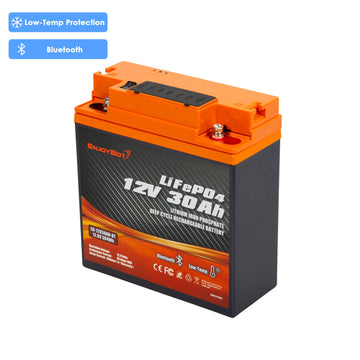
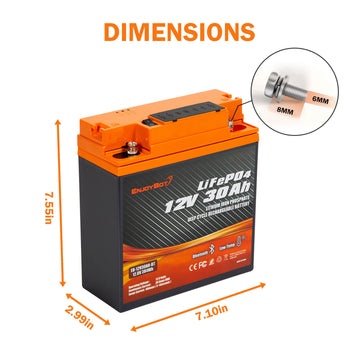
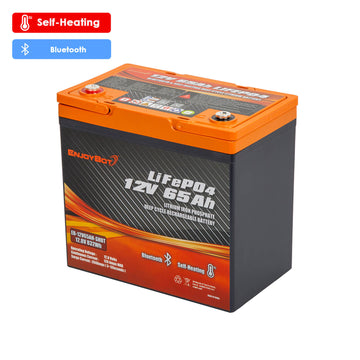
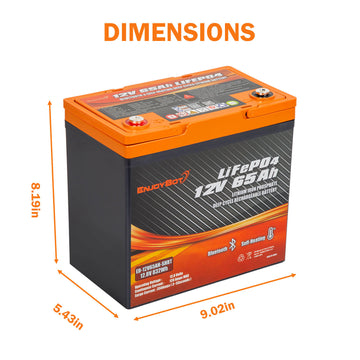
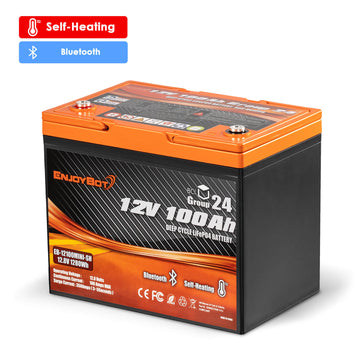
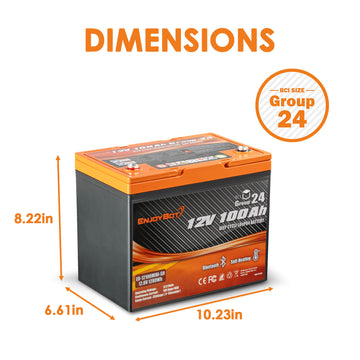

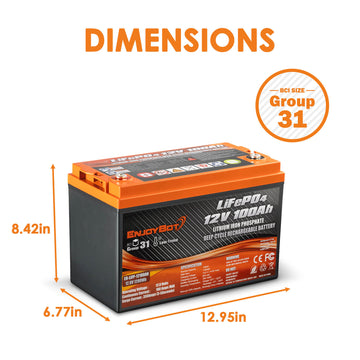
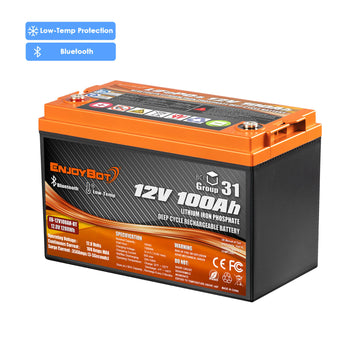
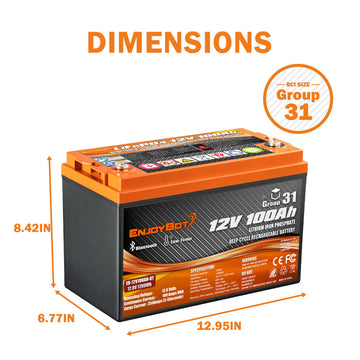

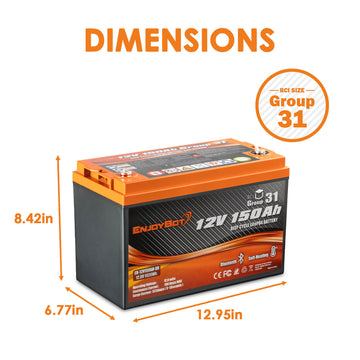

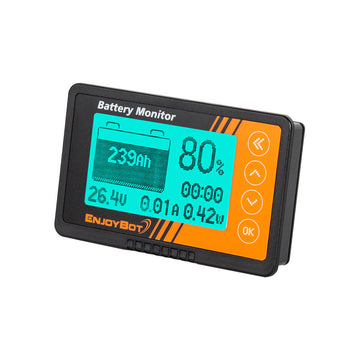
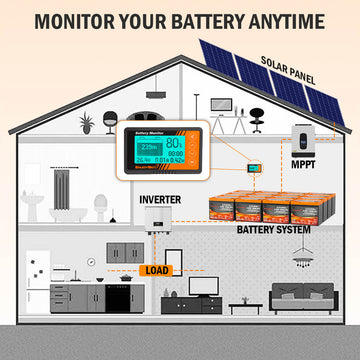
![[Upgraded Version] Enjoybot 14.6V 20A Waterproof Mountable LiFePO4 Lithium Battery Charger For 12V LiFePO4 Battery](http://enjoybotbattery.myshopify.com/cdn/shop/files/14.6V_20A_Waterproof_Battery_Charger_1_360x.jpg?v=1752565609)
![[Upgraded Version] Enjoybot 14.6V 20A Waterproof Mountable LiFePO4 Lithium Battery Charger For 12V LiFePO4 Battery](http://enjoybotbattery.myshopify.com/cdn/shop/files/14.6V_20A_Waterproof_Battery_Charger_2_360x.jpg?v=1752637374)
